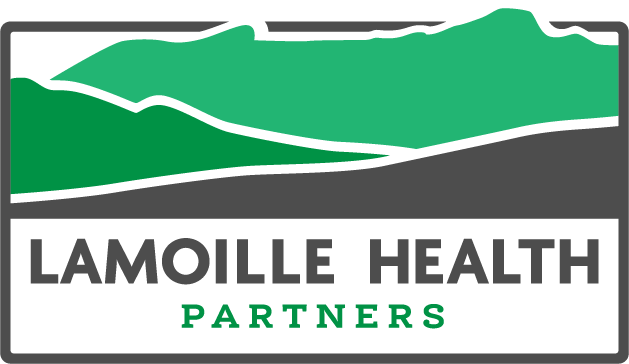By Melissa Volansky, MD, With Contributions by Meagan DeWitt, MS, LADC, LCMHC
According to the Vermont Health Department, Vermont witnessed 168 opioid overdose deaths in the first nine months of 2022. Millions of Americans face the negative consequences of opioid use disorder every day. Health, well-being, family life, friendships, and employment all deteriorate in the throes of this terrible disease.
This is an unnecessary tragedy. We have very effective safe treatments for opioid use disorder in the form of medication-assisted treatment (MAT). This approach combines medications — such as Suboxone or Methadone— with specialized counseling support. Suboxone is available from primary care physicians, including those at Lamoille Health Partners.
Patients taking Suboxone experience effective relief of opioid withdrawal symptoms, allowing these patients to focus on their daily lives. Once routine daily activities become manageable, patients can focus on their recovery journey. Medication-assisted treatment is by far the most effective means of reducing ongoing opioid use, maintaining engagement in treatment, and reducing the risk of overdose death.
How does Suboxone work?
Suboxone is a combination of two medicines: buprenorphine and naloxone.
- Buprenorphine prevents withdrawal symptoms and reduces cravings. Debilitating opioid withdrawal is the main reason patients continue or return to use. Suboxone lowers the intense effects of withdrawal, lessens cravings, and helps people focus on their path to recovery. Buprenorphine also works in a way that prevents patients from experiencing a “high” if they use other opioid drugs.
- Naloxone is added to help prevent Suboxone from being misused. Suboxone comes in a film or tablet form that is dissolved under the tongue. When Suboxone is taken in inappropriate ways (injecting or inhaling) the naloxone causes abrupt withdrawal symptoms which help discourage misuse of the medication. When Suboxone is taken appropriately, the naloxone has no effects at all.
Suboxone is one of three FDA-approved medications to treat opioid use disorder and has been prescribed successfully for decades. How long someone stays on this medication is unique to each person. Just as body tissues need time to heal after injury, brain circuits that have been altered by opioid use take time to recover. If someone is ready to stop their medication, their care team can help them slowly reduce the medication in a way that supports their recovery. Suboxone is safe and effective taken long term. For many patients, long term use is the answer.
Why should we condone substituting one drug for another?
The stigma around substance use disorders runs strong in our society. People who suffer from these disorders feel intense shame. They experience profound disapproval from others. We need to stop applying this stigma to this disease and its treatments. People suffering and dying from substance use disorders deserve compassionate non-judgmental life-saving medical care.
Suboxone is a safe and effective prescription medication supported by the American Medical Association, the American Academy of Addiction Psychiatry, the American Society of Addiction Medicine, and many other health leaders. Since 2005, the World Health Organization has included buprenorphine on its list of essential medicines. This is very different from lethal drugs of abuse like heroin and fentanyl.
Other chronic diseases are managed with medication without the stigma. People with epilepsy need medication to avoid seizures. Patients take medications after a heart attack to avoid another. Society tends not to frown on or blame these patients for needing medical treatment. People with opioid use disorder need medications to control symptoms and protect them from harm. They should be treated with the same respect and dignity.
Who can prescribe Suboxone?
Last year, federal health leaders changed the rules for prescribing Suboxone so more health professionals can provide MAT to more people in need of treatment. In general, primary care physicians, physician assistants, nurse practitioners, and other providers who work in family medicine and behavioral health can prescribe Suboxone for their patients. Practitioners who provide MAT as a part of their practice have a specific credential through the Drug Enforcement Administration called an “x-waiver.” Most also have special training in prescribing MAT.
What should I do if I might have a problem with using opioids?
Lamoille Health’s MAT team is here to help. Each county in Vermont has a MAT team funded through Blueprint for Health.
The team is made up of nurses and licensed alcohol and drug counselors who provide support, screenings and referrals for people who are interested in treatment. The team can also help with care coordination for MAT patients to make the process go smoothly.
The MAT team will check in with patients about their recovery or treatment needs and offer extra support in working toward their recovery goals. They also connect people to resources in the community to strengthen their long-term recovery. Some MAT team members offer counseling too.
Lamoille Health Partners is a part of the Rapid Access to Medication Assisted Treatment (RAM) program in Lamoille County which fast-tracks new patients into treatment — typically allowing them to start a medication within 72 hours. Research has shown that the sooner someone is able to start MAT, the more likely they are to remain in treatment and live a life in recovery.
If you’d like to find out more about MAT for yourself or a loved one, you can look at our program information here. Get in touch with our team by calling the MAT Line at (802) 888-6009.

